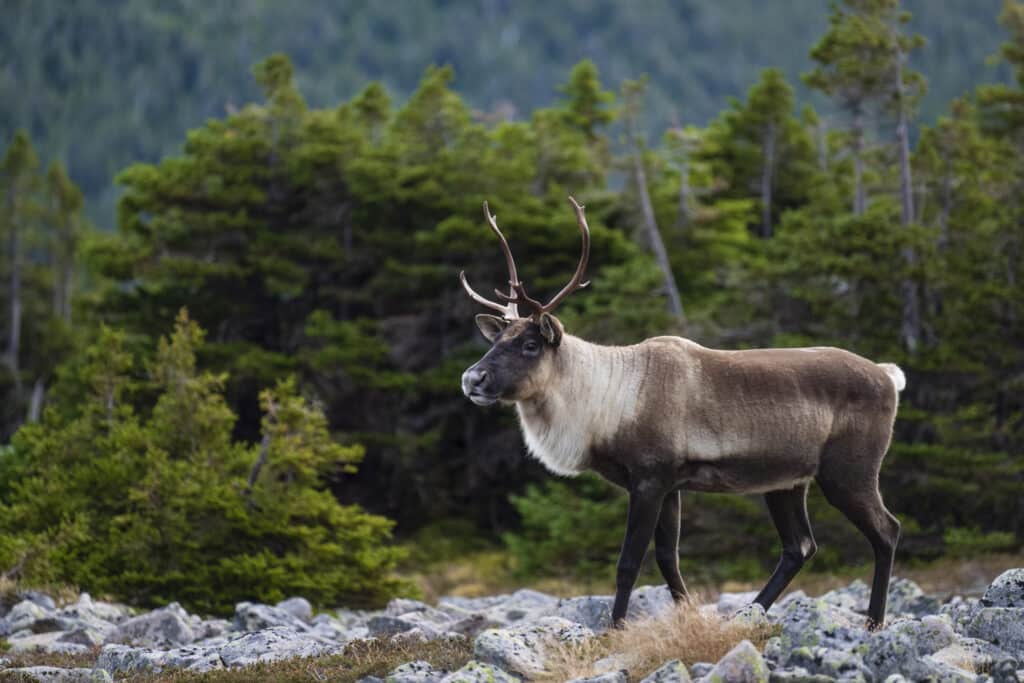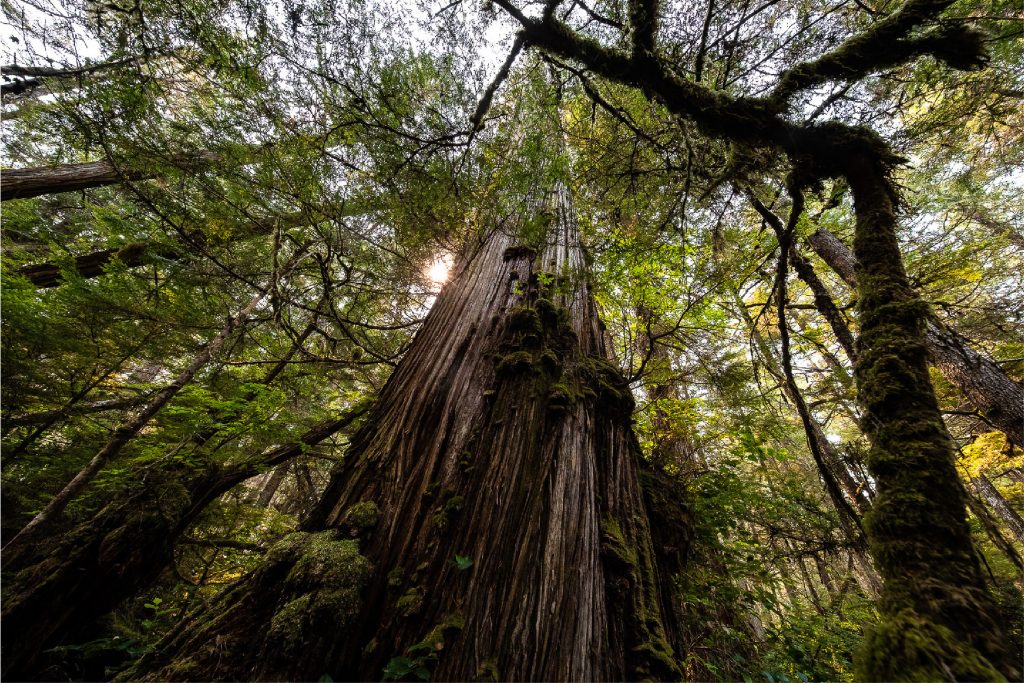The provincial government of British Columbia (B.C.) recently released a Draft Biodiversity and Ecosystem Health Framework. B.C. is known for its extensive coastline, awe-inspiring mountain ranges, dense forests and extraordinary wildlife. The framework is branded as the government’s commitment to prioritise conservation and management of the province’s vast ecological diversity – including the recovery of numerous species at risk (SAR).
The framework appears to characterise a positive approach to managing the litany of environmental challenges B.C. is currently facing; however, it fails to define clear objectives and actionable items to safeguard B.C. ‘s biodiversity. For decades the provincial and federal governments’ mismanagement of B.C. ‘s landscapes and wildlife, has resulted in detrimental repercussions, leading to reactive decisions that fail to support a long-term sustainable trajectory.
One of our greatest concerns with the draft framework is the lacklustre urgency to protect SAR. The preservation of SAR is a global issue with increasing prevalence as experts now believe we’re in the midst of a sixth mass extinction. Under Canadian law species-at-risk legislation was enacted, known as the Canadian Species at Risk Act (SARA). This federal legislation mandates the protection and recovery of extirpated, endangered or threatened species and their habitats. Boreal caribou are listed under SARA as threatened, central and southern mountain ecotypes are listed as endangered. A well-known example of this systemic negligence having grave impact is the province’s Caribou Recovery Program. The federal government is responsible for the recovery of endangered caribou, a duty they have offloaded to a provincial government with no species-at-risk legislation. This is a systemic failure which requires the immediate expectation of the federal government to step in and reclaim their power to mandate restoration and halt habitat destruction to promote positive and sustainable actions to save caribou.

As a result of B.C. not having provincially-dedicated species-at-risk legislation, a major void exists in any provincially led policy to protect endangered species. The provincial government undertakes planning and reporting through the Caribou Recovery Program, but the only legislative tools available to land managers in B.C. to support habitat conservation and caribou recovery are some combinations of the Land Act, Wildlife Act, the Forest and Range Practices Act, the Oil and Gas Activities Act, and the Environmental Protection and Management Regulation for petroleum and natural gas activities. These legislative tools are intended to govern unassociated activities (such as development or hunting) and none constitutes a stand-alone law with the intent of protecting species at risk.
The most applicable provincial law, the Wildlife Act, is acutely outdated and does not offer species-at-risk protection measures for caribou and their habitat. Only four species were designated under the Wildlife Act in 1980 (three endangered, one threatened): the Vancouver Island marmot, the sea otter, the American white pelican, and the burrowing owl. No animals have been added to the Wildlife Act since, despite the British Columbia Conservation Data Centre identifying over 1900 species as at-risk candidates. Additionally, in the last two years the B.C. government has designated deferrals of logging on 2.4 million hectares of old growth forest. Deferrals are not permanent protections, only ensuring that logging activity is postponed until a future decision is made on the fate of the forest.
Old growth forests are critical caribou habitat and less than 1% of B.C.’s forests support high-productivity ancient forest ecosystems: what remains is precious. Unfortunately for both caribou and ancient forests, the B.C. government policy does not differentiate between productive and non-productive old-growth forests; companies can harvest big trees and leave small, unproductive trees and still meet their old-growth retention targets. There are 415,000 hectares of forest that are home to large trees, but only 35,000 hectares with the largest, most productive old-growth trees. These fragmented and human-altered habitat spaces do little to protect caribou herds and may actually create more stress for already struggling herds.

The Ministry of Water, Land and Resource Stewardship’s execution of an aerial cull on wolves to recover the caribou population, while continuing to destroy more than 8000 km2 of forests across B.C. caribou herd ranges, since first listing caribou as an endangered species in 2003, is a blatant disregard of effective ecosystem management.
An action item within the draft framework states that:
“Regularly and transparently report publicly on the state of ecosystem health and biodiversity and progress in implementing the Framework (including how we are tracking against ecosystem health and biodiversity objectives and standards), and adjust response where needed based on the results of monitoring and evaluation”.
Pg. 10, Para. 1
Until recently, the B.C. government has been hosting quarterly updates to Caribou Recovery stakeholders. In September 2023, these meetings fell off the books with no warning to stakeholders. After follow-up with the Ministry, Pacific Wild was informed that the delivery of these updates is being redesigned in the form of biannual e-newsletters. Pacific Wild contacted the Caribou Recovery Program directly to inquire about when the cull is scheduled to begin, specific plans for culling wolves and other predators as well as information on which caribou herds will receive predator-reduction measures this winter. The response we received was vague and largely uninformative:
“For this winter (2023/24), the Province will continue aerial-based wolf reduction in 13 identified caribou subpopulations noted in the summary report above. Of those 13 caribou populations, ground-based cougar reduction is planned for two of those herds as well. Two additional caribou populations, at imminent risk of extirpation given their small size and declining population trends, are currently under consideration for wolf reduction treatments to support recovery in each range. The provincial Caribou Recovery Program is always assessing where this management action is required to address caribou recovery.
Regarding your request for updated population numbers, an analysis is still underway to update our estimates from 2021, which can be found on our website here: https://www2.gov.bc.ca/assets/gov/environment/plants-animals-and-ecosystems/wildlife-wildlife-habitat/caribou/bc_caribou_herds_population_estimates.pdf. We plan to include this update in our next communication”.
Darcy Peel, A/Senior Executive Director - Terrestrial Species Recovery

No phone number is available to contact anyone directly in the program, and to our knowledge no date has been set for the first e-newsletter to be published. The last formal update to stakeholders was in early July 2023.
The public feedback period for the Draft Biodiversity and Ecosystem Health Framework is open until January 31, 2024. We encourage you to participate in this public engagement period to advocate for the future of the province’s ecosystem and the wildlife reliant on its health and sustainability.
Talking points to consider when voicing your concerns to: biodiversity.ecosystemhealth@gov.bc.ca
1 – Public transparency is essential to environmental and conservation-based management proposals, initiatives, and ongoing programs. Programs should be readily adaptable to adjust practices with urgency if they are proven unethical, are not supported by independent science, or do not have social licence to operate.
2 – Opportunities for unbiased stakeholder engagement should be prioritised, allowing for more engagement for British Columbians outside of consumption-based and/or resource extraction industries.
3 – The urgent requirement to prioritise Species at Risk and designated action plans to protect those animals, restore their habitats and preserve old growth forests.

